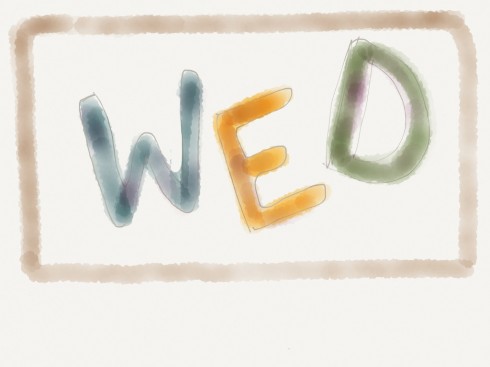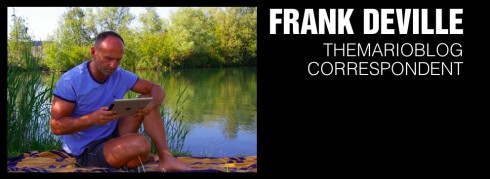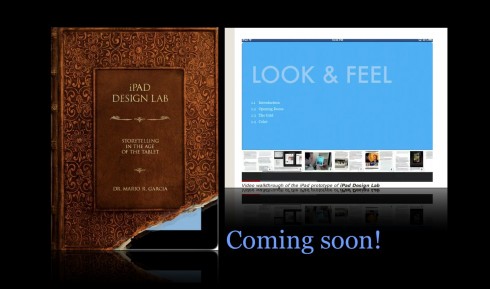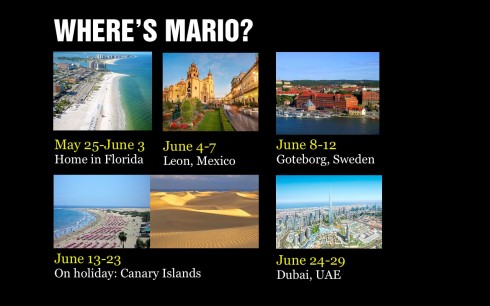TAKEAWAY: The WED philosophy—-the marriage of words and visual images—-applies to all platforms. In fact, WED is probably more important today as we coordinate storytelling across various platforms.
Reflecting on WED 25 years later

The iPad Design Lab book is in the final stages of editing/production and just this week I found myself reading one of the chapters in which I make a mention of the WED concept. It is a brief, passing remark about a philosophy that has served as the foundation of all my work.
Only a few days ago, during a workshop in Malaysia, one of the journalists participating asked if the WED concept was also valid for digital publishing.
Of course, I said. WED stands for Writing-Editing-Design, the marriage of words and images. if you will. Regardless of what platform we are producing copy for, we are writing, editing and designing.
It is because of this that I was thinking that perhaps I should have devoted more space in the new digital book to WED. At the time of the writing, only a few months ago, I quickly decided that there were many other new things to deal with in the book. However, as I sit here reading the completed manuscript, I see those three letters, the W, the E and the D dancing in front of my eyes.
Because WED has become second nature to me and my work, perhaps I do not spend as much time explaining it as I used to. It does not mean that it is less important.
How WED came to be
How can it be? I remember clearly how the WED concept came to be.
As I recall it, and as I told the story in my book Newspaper Evolutions (Poynter, 1997), I must have been working on my 70th redesign project (circa 1987) when “the realization hit me while flying”. Why were some redesign projects more successful than others? The answer came to be above the clouds: A newspaper that includes a thorough integration of writing-editing-design (WED) into everything it addresses during a redesign enjoys better results than one in which a redesign simply targets cosmetic or graphic aspects.
That was a wow moment for me. It defined how I worked and how I taught our craft forever. Still does today.
The WED concept also became the rock on which we planned and conducted workshops at The Poynter Institute for Media Studies for a generation of journalists. Working side by side with my colleague, Dr. Roy Peter Clark, that great writer, writing coach and teacher, we crossed migrated the disciplines. If you came to train at a Poynter seminar, you would be exposed to WED, as opposed to a total concentration on just one of the disciplines. Writers and designers mingled and discussed issues of editing and presentation on specific pages. The dialog continued when those seminar participants returned to their newsrooms.
As a result, I incorporated writers and copy editors more fully into the process of the redesign, and still continue to do it today, as we rethink newsrooms and move across platforms.. I knew that good design would evolve from good words. Content is king. Design packages it to make it appealing and easier to digest.
When writing-editing-design come together well, it is pure bliss on the page or the screen. One can hear the bells chime.
It was because of WED that I developed story structures as the first step towards a successful redesign. And I am happy to say that the new digital book deals in detail with story structuring, which are key in the tablet platform as well.
WED more important today
One may add that today the concept of WED takes greater importance because the three disciplines must be more carefully coordinated to perform differently in the various platforms.
As I said in that Newspaper Evolutions book in 1997 :
“WED is also dependent on newsroom structures. As long as we see writing as one department, editing as another, and design as a floating island on another floor, then we have no WED potential.”
Today, we can add, that for WED to be successful and sustainable in a multi platform world—-think media quartet here—-we must see the various platforms as being part of one seamless operation where the story comes first.
Perhaps WED is more important today than it was about 530 redesigns ago when I first thought about it.
Come to think about, my new digital book, The iPad Design Lab: Storytelling in the Age of the Tablet, does make a brief reference to WED, but I am happy to see that the entire concept of the book, how it is written, edited and designed, is based on following the WED philosophy.
Five WED tips in a multi platform world
1. Include the writer/editor and designer from the start of planning how a story will be presented.
2. Let the specific characteristics of each platform determine how the writing/editing/design of the piece is carried out.
3. Let WED serve as the springboard to multi sensory treatments: audio, video, pop ups
4. Don’t attach more significance to one platform over the other. WED says it should not be so. It is not print or digital first, it probably is WED first, with respect for what each platform has to offer.
5. Remember that WED is a discipline, indeed, but it works best when those applying it are disciplined about its utilization.
Previous blog post with references to the WED concept
https://garciamedia.com/blog/articles/at_the_washington_post_the_power_of_good_storytelling_with_great_design
Pop up of the day

From Bild in Germany: a season appropriate pop up—-how to select the right bike for your summer adventures!
Of special interest today
An Ooooops moment for the Mitt Romney campaign
http://www.washingtonpost.com/blogs/the-fix/post/romney-app-misspells-amercia/2012/05/29/gJQAgN8K0U_blog.html
– UK: DMGT digital revenues to offset print revenues “within five years”
http://www.brandrepublic.com/media/article/1133947/dmgt-digital-revenues-offset-print-revenues-within-five-years/
– UK: Guardian data content reached 1m users a month for past year
http://www.journalism.co.uk/news/guardian-datastore-hits-1m-users-a-month-after-three-years/s2/a549407/
– USA: Cox Media to outsource ad design and production
http://www.bizjournals.com/atlanta/news/2012/05/25/cox-media-to-outsource-ad-design-and.html
– USA: NY Times updates iPhone/iPad apps for customized reading
http://www.niemanlab.org/2012/05/ny-times-updates-iphoneipad-apps-for-customized-reading/
– USA: Will AZCentral’s Big Leap Into Hyperlocal Be Model for Other Newspapers?
http://streetfightmag.com/2012/05/24/is-azcentrals-big-leap-into-hyperlocal-a-model-for-other-newspapers/
– USA: Warren Buffett and Newspapers: Infatuation or Cold Calculation?
http://www.forbes.com/sites/jeffbercovici/2012/05/24/warren-buffett-and-newspapers-infatuation-or-cold-calculation/
– USA: A Doomed Romance With a New Orleans Newspaper
http://www.nytimes.com/2012/05/28/business/media/the-times-picayune-new-orleans-and-a-doomed-romance.html?_r=1&pagewanted=all
– Australia: Fairfax journos to create content across all platforms
http://panpa.org.au/2012/05/29/fairfax-journos-to-create-content-across-all-platforms/
– Will Android in-app subscriptions attract magazine and newspaper apps?
http://www.guardian.co.uk/technology/appsblog/2012/may/25/android-in-app-subscriptions
The iPad Design Lab: Storytelling in the Age of the Tablet

Video walkthrough of the iPad prototype of iPad Design Lab
